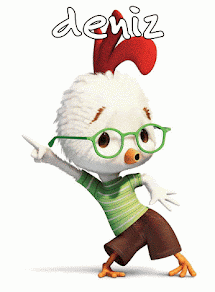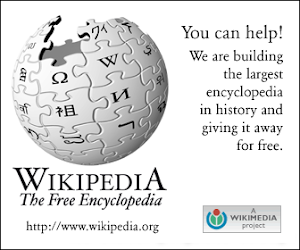Loại file: pdf
Dung lượng: 3.33 MB
Thể loại: Học ngoại ngữ - Tiếng Hàn Quốc
People often complain, and rightly so, about the lack of useful works for self-instruction or student reference in Korean at intermediate level. There's no shortage of books, websites and software programs claiming to get people started on the language, and there are some, though far fewer, advanced readers. But until this book arrived, people who had made a start on teaching themselves, or maybe given up on Korean classes because they seemed to be getting nowhere slowly, were hard pressed to find anything suitable to guide them beyond the elementary stages.
This may well be the most important and useful book for learners (and teachers) of Korean published in the past decade. It would be no use to absolute beginners, but then it makes no claim to be. For everyone else involved in learning or teaching Korean, from self-instructing learners who've gained a grasp of the basics, through students at all stages on taught courses, and teachers of such courses looking for effective formulations and telling examples of key features of the language, to native speakers who would like hints on explaining aspects of their own language to puzzled foreigners, this book not only fills what was previously a yawning void, but does so with an accuracy, clarity and concision which are all the more remarkable because the authors had hardly any models or precedents of earlier works at this level to help them on their way.
Korean grammar (though many learners and not a few teachers might disagree) is not actually all that difficult or complex as grammars go. It seems difficult to learners mainly because it is so different from the grammars of Western languages, and since very few people have been taught to understand what grammar actually is (and that it's not the sort of thing people write to newspapers to complain about when they think it's "bad") they find it hard to reconfigure their underlying grammatical skills to engage correctly with the requirements of Korean. Many Korean course-books, after an initial run-through of the basics, then embark on what looks to learners like a dishearteningly endless sequence of "one damn pattern after another", more and more pieces of "usage", seemingly unrelated to each other, all needing somehow to be learned. So even for learners who don't make the mistake of equating difference with difficulty, achieving a reasonable grasp of Korean grammar still leaves them in the shallows of an apparently vast ocean of usage where, without a reliable map and compass or a trusty pilot, they seem to have only featureless horizons on all sides, with no measure or even hope of progress.
This is a pity, because there are indeed substantial affinities between these bits of "usage", though it's hard for course designers to solve the chicken-and-egg problem that until you know a certain number of these apparently separate items, you can't begin to see how they hang together. Some coursebooks, like the authoritative multi-volumed and monumental (but alas also monumentally tedious) KLEAR Integrated Korean course, take the "head down and trust me, it'll all come together eventually" approach. Which is all very well if an enthusiastic and capable teacher is there to reinforce the request and sustain morale (or if you've paid a large fee up front and bought the coursebooks, and so are motivated to stick with it for that reason alone) but less likely to work with a solo learner.
Although this book contains abundant individual explanations of specific points (many of them a good deal clearer and more accurate that their counterparts in other texts) its great strength is that nothing is ever presented either in the abstract or in isolation. Every single item is illustrated, and indeed often actually explained, through plausible examples (by which I mean examples which resemble Korean as spoken and written by natives rather than being cooked up for teaching purposes) and displayed in its relations of similarity or contrast to other cognate points. Learners seeking clarification about a particular aspect are likely to emerge not just with the specific information they were looking for, but also with a generic grasp of the broader context of that information.
That said, this is not a book that attempts to offer "quick fixes". Though it can, and surely will, be usefully consulted by readers in search of quite definite advice on a well-defined topic, its greatest benefit is likely to be felt by readers who browse through its pages, maybe as bedside reading, and reflect on their own hitherto disorganised encounters with the language in the light of the overviews it offers.
The Korean language is part of a culture in which there are many subtly and significantly different ways of saying (and doing) what to Westerners look like more or less the same thing. The skill lies in knowing which of those ways is appropriate for which context. This book not only shows all the possibilities as far as language choices are concerned, but gives extremely practical guidance as to what is appropriate and where. And it is consistently honest, and usefully informative, about ways in which Korean, like all living languages, refuses to obey the dictates of the Ministry of Culture, whose various pronouncements are treated in many Korean textbooks with a deference that does neither the language nor its learners much service.
The titles and topics of the various sections in the table of contents (which can be seen in the sampler on this site) might strike some people as strangely diverse, or even arbitrary. But a look into each of the sections reveals the fruitful principle behind their selection. Each represents not necessarily a grammatical category or a semantic type, but a way of bringing together apparently diverse examples in a way that reveals underlying affinities and so helps the reader build up a sense of what hangs together in this language and why. Readers for whom much that is exemplified is new will certainly learn a lot. But the learners most likely to benefit are those who have been exposed to enough Korean to encounter many of the things explained and exemplified here, but so far lack any framework of understanding that would let them see the principles behind the practices. In the same way, teachers to whom little or nothing of the basic content should come as a surprise will find new and inspiring ideas about how to help native speakers of a European tongue gain a more productive understanding of how Korean works. Anyone with a serious interest in learning or teaching Korean will not regret buying and reading this book.
www.amazon.com/Using-Korean-Guide-Contemporary-Usage/dp/0521667887/ref=sr_1_1
Để biết thêm thông tin về Using Korean: A Guide to Contemporary Usage - Miho Choo này, xin vui lòng liên hệ theo:
Phạm Thanh Hùng
Yahoo: thanh_hungtb
Skype: hung.vcid
Hot-line (24/7): 0985. 116. 217
Số tài khoản: 1200209203960
Sở giao dịch Ngân hàng nông nghiệp & phát triển nông thôn Việt Nam
số 2 Láng Hạ - Ba Đình - Hà Nội
Số tài khoản: 1200209203960
Sở giao dịch Ngân hàng nông nghiệp & phát triển nông thôn Việt Nam
số 2 Láng Hạ - Ba Đình - Hà Nội

















0 nhận xét:
Đăng nhận xét